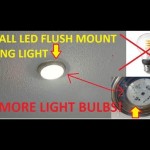What Is Coffered Ceiling Made Of?
Coffered ceilings are a timeless architectural feature that adds depth, character, and a touch of opulence to any space. These ceilings are characterized by recessed panels or coffers, which create a grid-like pattern. The materials used to construct coffered ceilings vary depending on the desired aesthetic and budget.
Wood
Wood is a classic material for coffered ceilings, offering warmth, natural beauty, and durability. Commonly used wood species include oak, mahogany, and pine. Wood coffered ceilings can be stained or painted to match the surrounding décor.
Gypsum
Gypsum is a versatile material that is commonly used in drywall and plaster ceilings. Gypsum coffered ceilings are created by applying a layer of gypsum over a framework of wood or metal supports. They are lightweight, easy to install, and can be painted or textured to create various finishes.
Plaster
Plaster is a traditional material for coffered ceilings, known for its smooth, elegant finish. It is applied in multiple layers over a lath or wire mesh support system. Plaster coffered ceilings require skilled craftsmanship and can be more labor-intensive than other materials.
Metal
Metal, such as steel or aluminum, is a durable and modern option for coffered ceilings. Metal coffers can be perforated or solid, and they can be painted or anodized in various colors and finishes. They are often used in commercial and industrial spaces.
Polystyrene
Polystyrene is a lightweight and cost-effective material for coffered ceilings. It is a type of plastic foam that is cut into coffer panels and then adhered to the ceiling. Polystyrene coffered ceilings are moisture-resistant, but they may not have the same durability as other materials.
Considerations for Choosing a Material
When selecting a material for a coffered ceiling, consider the following factors:
- Budget: Materials such as wood and plaster can be more expensive than gypsum or polystyrene.
- Weight: Metal and gypsum coffered ceilings are heavier than polystyrene, which may require additional structural support.
- Maintenance: Wood coffered ceilings require periodic cleaning and refinishing, while plaster and metal are more durable and require less maintenance.
- Style: The material choice should complement the overall aesthetic of the space.
Coffered ceilings are a versatile and visually striking architectural element that can enhance any interior design. By understanding the different materials available and considering the factors mentioned above, you can make an informed decision that meets your specific needs and preferences.

Coffered Ceiling Ceilings Armstrong Residential

Coffered Ceilings American Hardwood Information Center

All About The Coffered Ceiling Trim Team

Nu Wood Coffered Ceilings Made Of Durable Polyurathane

Our Home From Scratch

Coffered Ceilings Made Of Durable Polyurethane Extreme How To

Coffered Ceiling Ceilings Armstrong Residential

How To Install Coffered Ceilings Think Wood

Coffered Ceilings Pros And Cons Is A Ceiling Right For You

Coffered Ceilings 101 All You Need To Know Bob Vila
Related Posts








